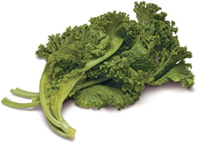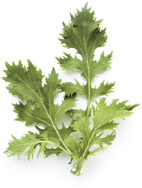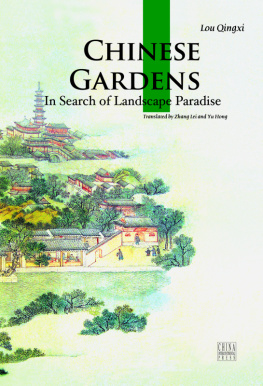GROWING CHINESE VEGETABLES IN YOUR OWN BACKYARD

GROWING CHINESE VEGETABLES IN YOUR OWN BACKYARD
Grow 40 Vegetables and Herbs in Gardens and Pots
Geri Harrington
Foreword by Norma Chang

IN LOVING MEMORY OF MY HUSBAND, DON HARRINGTON, AND TO MY SONS, TY AND JEFF
The mission of Storey Publishing is to serve our customers by publishing practical information that encourages personal independence in harmony with the environment.
Edited by Gwen Steege and Elizabeth P. Stell
Art direction and page design by Jessica Armstrong
Front cover design and calligraphy by Alethea Morrison
Photography and illustration credits appear on page 216
Indexed by Nancy D. Wood
2009 by Jeff Harrington
Revised and updated from Grow Your Own Chinese Vegetables, by Geri Harrington, Storey Publishing, 1984
All rights reserved. No part of this book may be reproduced without written permission from the publisher, except by a reviewer who may quote brief passages or reproduce illustrations in a review with appropriate credits; nor may any part of this book be reproduced, stored in a retrieval system, or transmitted in any form or by any means electronic, mechanical, photocopying, recording, or other without written permission from the publisher.
The information in this book is true and complete to the best of our knowledge. All recommendations are made without guarantee on the part of the author or Storey Publishing. The author and publisher disclaim any liability in connection with the use of this information. For additional information, please contact Storey Publishing, 210 MASS MoCA Way, North Adams, MA 01247.
Storey books are available for special premium and promotional uses and for customized editions. For further information, please call 1-800-793-9396.
Printed in the United States by Versa Press
10 9 8 7 6 5 4 3 2 1
LIBRARY OF CONGRESS CATALOGING-IN-PUBLICATION DATA
Harrington, Geri.
Growing Chinese vegetables in your own backyard / by Geri Harrington.
p. cm.
Includes index.
ISBN 978-1-60342-140-9 (pbk. : alk. paper)
1. Vegetables, Chinese. 2. Vegetable gardening. I. Title.
SB351.C54H37 2009
635dc22
2009001530
CONTENTS
FOREWORD
First published 30 years ago, Geri Harringtons Grow Your Own Chinese Vegetables is even more relevant today than it was then. In the intervening years, both gardeners and cooks have become increasingly curious about the cuisines of other cultures and increasingly confident in growing foods from the other side of the planet. North America been enriched by the growth of multiculturalism, and at home, the world seems much smaller. Travel has become easier and more common, and returning travelers are eager to eat at home the delicious foods that they discovered while abroad.
The Chinese have a rich and varied food culture, one that is also known to be extremely nutritious, and the fresher the ingredients, the more healthful the dishes will be. What could be fresher than vegetables from your garden to your wok? Both experienced and novice gardeners will find the authors enthusiasm and out-of-the-box ideas refreshing, and all will discover, through her book, how these Chinese vegetables are as easy-to-grow as our more familiar Western vegetables.
In this book, youll not only find complete information on the appearance and flavor of 40 Chinese vegetables and herbs, but also learn which ones are suitable for growing in your area, their cultural requirements, when to harvest them, and how to store them to maintain optimum quality. Equally important, youll discover dozens of creative ways to prepare them and include them in your day-to-day menus, both Chinese and non-Chinese.
Happy Gardening! Happy Wokking!
Norma Chang
ACKNOWLEDGEMENTS
In a field such as this one, where there are, to my knowledge, no books in English that cover the subject comprehensively, I have had to rely to a large extent on the help of many individuals widely scattered throughout the United States. It would be impossible to list them all, although each piece of information no matter how small was a valuable contribution to the overall knowledge I was gradually able to accumulate and draw on in writing this book. The Department of Agriculture, through its research service, was especially helpful, as were the staff of the Brooklyn Botanic Garden and the New York Botanical Garden. I am indebted also to the Library of the Gray Herbarium of Harvard University.
The individuals I would like to single out for special thanks are: Shui-Min Block; Dr. Parker Hang, Yale University Press; Mrs. Parker Hang, East Asian Reading Room, Yale University; W. Bradford Johnson, Vegetable Crops Specialist, CES, Cook College, Rutgers University at New Brunswick; Donald M. Mohr, Monmouth County Senior Agent, CES, Rutgers University; Walter Pagels, San Diego, California; Jack Parsons, Extension Agent, CES, Oregon State University; William J. Sanok, Agricultural Program Leader, CES, Cornell University; Perry Slocum, President, Slocum Water Gardens; Pete Slocum, Slocum Water Gardens; Kent B. Tyler, Vegetable Specialist, CES, University of California at Parlier; Bill Uber, Van Ness Water Gardens; Professor Mas Yamaguichi, CES, University of California at Davis.
In addition, I would like to thank all the seed suppliers who were so generous with their time and advice that I was able to grow successfully even those vegetables with which I had no previous experience and to enjoy their new flavors and textures in my kitchen. I especially want to thank the people at the Kitazawa Seed Company for hunting up for me seeds that were not available in their catalog.
And as always my thanks to my husband, Don, who shared my interest in every new flower and fruit.
A PHOTO GUIDE TO THE CHINESE VEGETABLES

MUSTARD GREENS,

MUSTARD GREENS,

GRALAND CHRYSANTHEMUM,

MIZUNA,

VEGETABLE AMARNATH,

SWEET MELON,

CHINESE PUMPKIN,

ASIAN CUCUMBER,

WATER MELON,

Next page





























